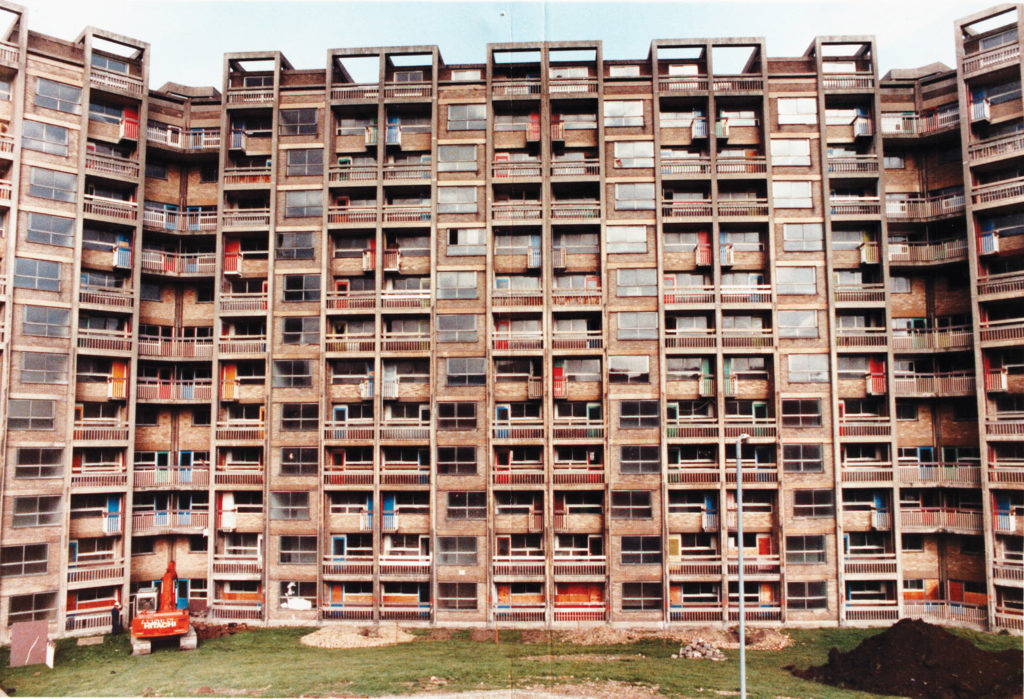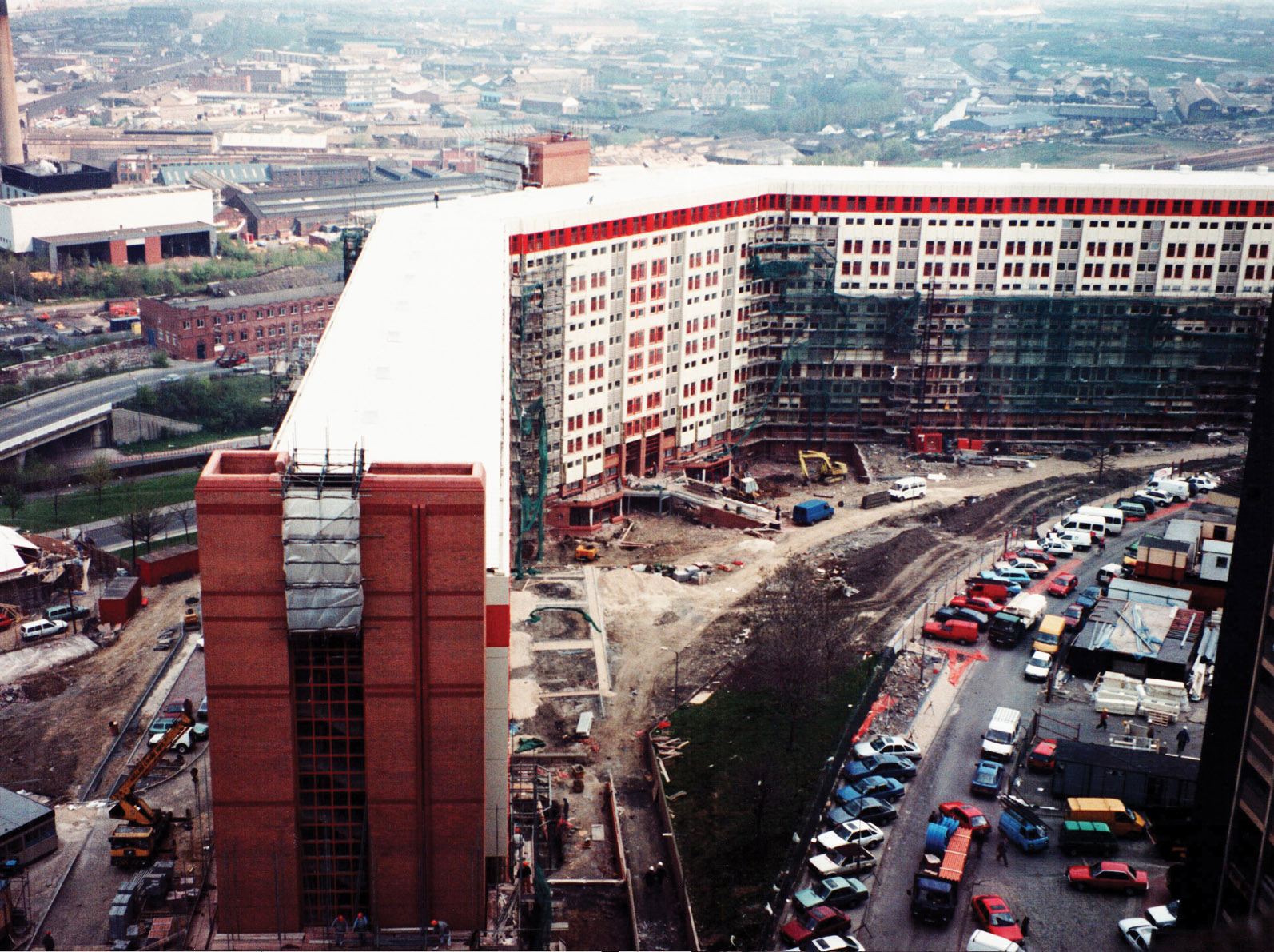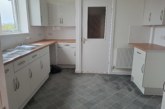“Sometimes the best way to plan for the future is to learn from the past, and when I joined NorDan UK Ltd in 2021,” says Commercial Sales Manager for the North of England, Sonia Travis, “I was interested to know more about the regeneration of Castle Court, a 1960s Sheffield tower block refurbished in the early 1990s.”
Today NorDan is one of Europe’s leading manufacturers of high performance timber windows and doors, employing over 2,000 people and turning over £58m. But in the early 1990s the company was a relative unknown in the UK. In 1991, a surprising combination of circumstances led to 400 of NorDan’s StormGuard windows being installed in an iconic Sheffield tower block.
First manufactured in 1962, the aluminium clad timber StormGuard window system was designed to deal with the climate extremes of the Norwegian coast. The window has become something of a design classic, with well over six million now fitted across Europe, with a call back rate of virtually zero. But it was the installation at Castle Court that proved to be a watershed moment for window system in UK social housing.

The then Tower B was one of three 1960s dilapidated high-rise blocks at the Hyde Park development about to have a dramatic change in fortunes. Two of the towers, A and B, were earmarked for regeneration to provide accommodation for 3,000 athletes competing at the World Student Games, to be hosted by Sheffield the following year. Beyond the games, the refurbished towers would provide much needed, quality social housing, managed by the then North Counties Housing Association (now The Guinness Partnership).
The resulting cutting-edge design refurbishment not only saw Castle Court become the first high-rise over-cladding project in the North-of-England, but the project that was ‘over-specified’ to the point that the tenants, landlord and the environment are still reaping the benefits today.
A tale of two Peters
So to the beginning, and the coming together of a visionary architect Peter Bell, and a soon to be over-cladding specialist fabricator Peter Hillyard. Peter Bell explains his involvement: “Sheffield City Council ran a design competition on how to regenerate Hyde Park’s towers A and B for the Games — which was won by the Council’s own team of architects. Their winning designs were based on over-cladding, and at the time I was the only real expert in this new field, so the Council’s architects turned to me to manage the project.”
Fabricators Allscots (now design build facades led by Peter Hillyard), and NorDan won the tender to refurbish what is now Castle Court, and for Pete Hillyard, the project was the transformative ‘sliding doors’ moment.
Peter Hillyard explains: “The level of design and specification quality on that project set a standard that I’ve tried to maintain from that day on. I didn’t realise it at the time, but the unique circumstances surrounding Castle Court meant that it’s still a shining example of how to regenerate high-rise residential buildings 30 years on.”

A catalyst or higher quality
Architect Peter Bell explains why: “The World Student Games was a catalyst for investment in regeneration, so I was able to use that budget to specify what I knew to be sensible and safe.
“I’d seen NorDan’s high performance windows in action in Norway, and had been impressed by the company’s capacity to deliver timber windows and doors for large scale projects — plus the aluminium clad timber fitted with the building’s aluminium facade.”
Pete Hillyard explains further: “What I gained from that project was that value of specification should be evaluated over time, and if you build to last, and specify materials that surpass current standards, you can meet increasing future standards and expectations.
“And that’s exactly what’s happened: 30 years on, and not a single window has required replacement or maintenance, and all the tilt-and-turn mechanisms still work. The homes are cosy, air and water tight, and the windows achieve 1.6w/m2C, which still meet today’s refurbishment standards.”

Pete Hillyard concludes: “In my experience, windows such as PVC-U and aluminium would have needed to be replaced after 15 years. Local authorities and social landlords have a lot of boxes to tick these days, not least providing people with high-quality, low carbon and energy-efficient homes that are easy to maintain.
“There are lots of ways the industry has got high-rise recladding wrong over the years, but in my opinion there’s only one way to get it right, and I urge any specifier or architect considering a high-rise retrofit or new-build project to review Castle Court or visit Sheffield, and discover the true value of good engineering.”
So is Castle Court an example of over engineering? It is when you compare the refurbishment to fenestration and building standards in 1991. But then you also have to consider that the cladding materials used at Castle Court were passed safe, and when you consider that UK building has seen numerous increases in standards (including the recent Part L window standards increase), StormGuard remains compliant to all current regulations.
So, far from suggesting an over indulgent specification, over 30 years, Castle Court points to sound, safe and cost-effective decision making.
Header image shows Castle Court post refurbishment with NorDan’s StormGuard windows installed.









